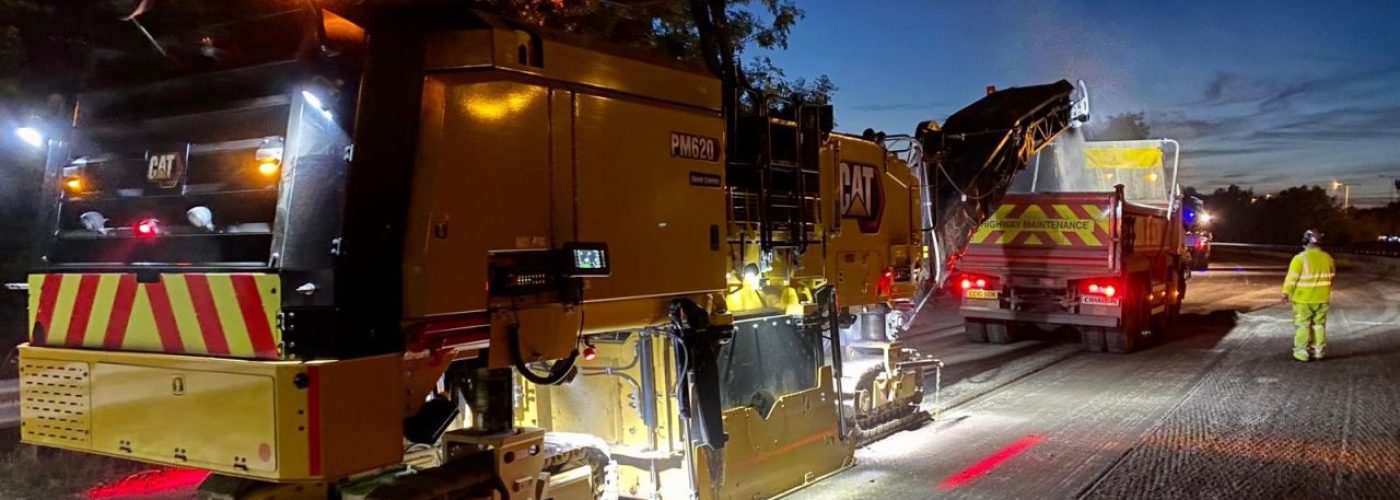How Finning can help the paving industry perform safe and clean operations
In May 2020, the Government announced a £2 billion-pound investment package to establish cycling and walking lanes on the streets of our busy towns and cities, much like you would see in Amsterdam. This initiative opens many opportunities for the paving industry who may be struggling at the hands of the pandemic. Here Jonathan Davies, industry manager of paving at Finning UK and Ireland, exclusive distributor of Cat® products, explores how better-equipped machines can help maximise productivity, while maintaining safe and sustainable operations.
Local authorities typically employ pavers to alter road layouts to encourage commuters to walk or cycle to work, to reduce urban traffic and to streamline motorway journeys. As well as the investments in cycle and pedestrian lanes, the Government has announced grants of up to £27 billion to upgrade the UK’s busiest roads by 2025. With the potential to create 64,000 construction jobs, the paving industry will look to new technology to advance its concrete paving systems.
Paving systems have already evolved to accommodate more sustainable practice. Micro-surfacing now involves laying high quality aggregates combined with polymer-modified asphalt emulsion to repair roads. Although this improved recipe reduces the amount of hazardous fumes released into the atmosphere, it does not eliminate them altogether. Technology is in place to reduce environmental impact further.
It is optimistic to say that encouraging cycling and walking in cities will counteract the environmental impact of the paving sector. Companies must equip themselves with sustainable machinery to carry out clean operations. The latest asphalt pavers have an advanced eco-mode setting that modifies engine speed based on load conditions. This cuts fuel burn by five per cent and maximises the performance of the machine.
With ten per cent of global carbon emissions stemming from the construction industry, the environmental impact of the paving sector is one area that represents a significant opportunity for improvement. In fact, it is estimated that one standard asphalt paver produces 170.3 kilograms of CO2 per full tank of diesel. To tackle this head-on, electric Cat® vehicles — notably tractors in the agricultural sector — are being trialled to see whether performance can match the ecological benefits. To this end, the paving industry may soon be benefiting from electric vehicle operations, rather than diesel-fuelled engines.
Much of the Cat Stage V range is used by paving companies because the equipment reduces emissions by 25 per cent, while maintaining productivity. A fleet of CatPM620s were used on a paving project in northern England in 2018 and were praised for their consistency in approach. The manoeuvrability and precision in extraction and planing gave way to productive operations, and all work was completed quickly and efficiently.
A big consideration for the paving sector is finding adaptable, low-intervention solutions that will be completed quickly to avoid unnecessary disruption to the public. Ultimately this is achieved by having a good product support infrastructure from suppliers — one that will extend the life of their machinery and reduce resource input. There is also the option of buying used machines. Used pavers, planers and compactors are serviced and maintained so that the benefits of the ecological Caterpillar technology can be experienced by the next user.
Purchasing used equipment, therefore, should not be a concern for the paving sector. Certified and warrantied machines allow for repairs to be done efficiently so that paving may continue at no time cost to the construction workers. Cat cutter bits from a used cold planar, still last 80 per cent longer than conventional carbide cutter bits to provide greater production, at 15 per cent decreased fuel consumption. Although using a cold planer would still have some negative environmental considerations, reducing your impact to the minimum should be a priority.
Pavement milling requires a substantial amount of control and precision to leave behind a clean milled surface for pedestrians and cyclists. This is achieved through reliable rotor drive systems that optimise engine speed to peak torque function all through the cutting process. When cutting gets difficult, a reliable rotor drive system gives consistency across a project as well as maximised performance capabilities.
Considering current health pressures, government investment will hopefully increase the fitness of the population following coronavirus. Cyclists and walkers should feel safer travelling in designated lanes, and reduced congestion will make built-up areas more accessible for the emergency services. What’s more, by encouraging energy-efficient travel, we can help reduce the country’s carbon emissions.





